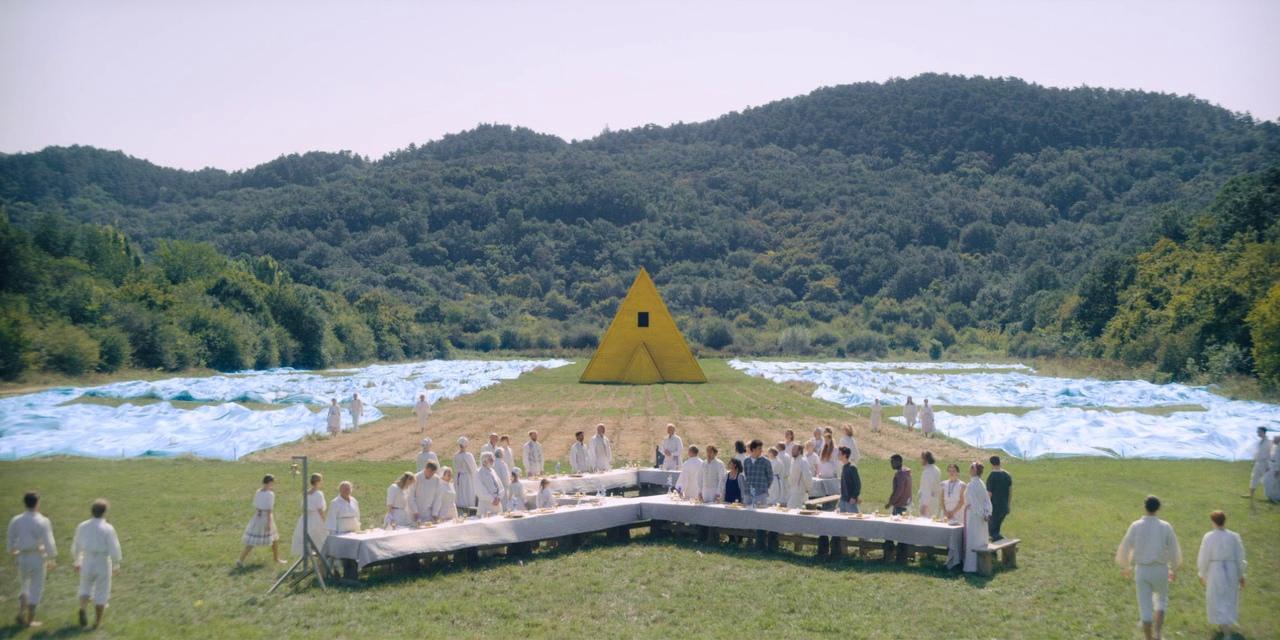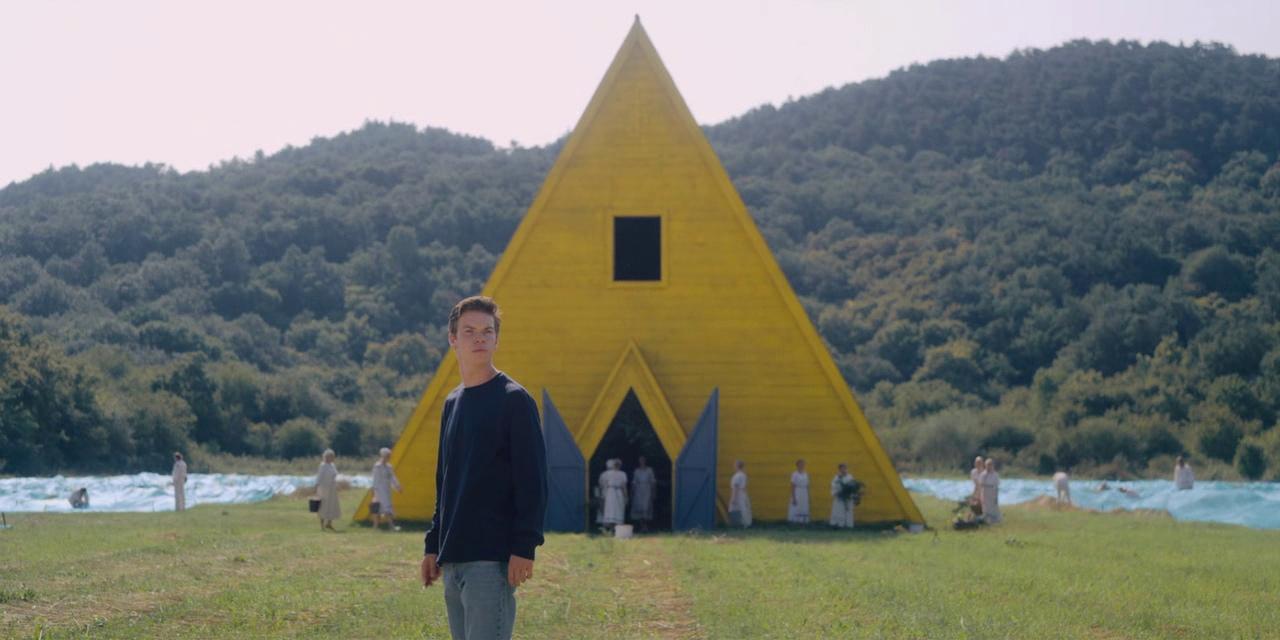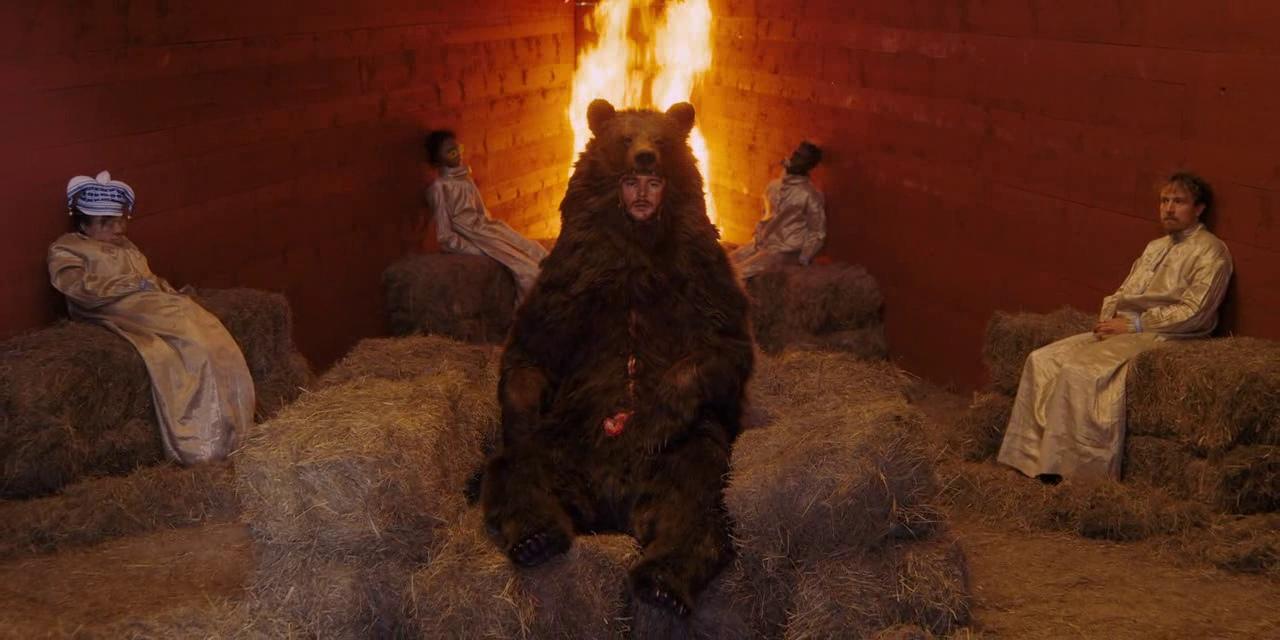
Some horrors stalk you in the dark. Others, like Ari Aster’s Midsommar, unfurl in the blinding glare of the perpetual sun, their true terror revealed in the meticulously choreographed dance of flowers and shattered sanity.
This isn’t just folk horror; it’s a clinical, chilling psychoanalysis of grief curdling into psychosis, cloaked in a deceptively beautiful, utterly alien embrace. It’s a film that promises rebirth and delivers a devastating immolation of the soul.
From its snow-laden, suffocating opening, Midsommar plunges us into the abyss of Dani Ardor’s (Florence Pugh) life. The unspeakable tragedy – the murder-suicide of her entire family – isn’t just a plot device; it’s the raw, open wound around which the entire film revolves. Dani is not just grieving; she is adrift, gasping for air, desperately clinging to a fractured relationship with Christian (Jack Reynor), who is himself a masterclass in passive-aggressive detachment. Their journey to the isolated Hårga commune in Sweden, ostensibly for a cultural experience, is in reality a journey into the heart of Dani’s own emotional void.

The genius, and the true horror, of Midsommar lies in its insidious seduction. The Hårga are not snarling monsters in the shadows; they are smiling, singing, seemingly benevolent cultists bathed in an eternal summer. Their world is one of communal harmony, ancient rituals, and vibrant beauty. They offer Dani what her “normal” life cannot: immediate, overwhelming empathy. When she first breaks down, convulsing with sobs, the women of the Hårga mirror her grief, wailing in unison, creating a visceral, primal bond. It’s a powerful, almost irresistible lure for a person in such profound emotional pain.
But beneath the garlands and feasting, a sinister agenda slowly, meticulously unfolds. The Hårga operate on an unyielding, cyclical belief system where life, death, and renewal are all part of a grand, chilling design. The very first shocking ritual, the ättestupa (elderly suicide), isn’t just an act of violence; it’s a profound violation of Western sensibilities, designed to disorient, to normalize the horrific, and to force the outsiders into uncomfortable complicity. Christian’s flinching, Josh’s morbid fascination, Mark’s crass disrespect – these reactions are all observed, evaluated, and ultimately, marked for elimination.

Dani, however, is different. Her trauma makes her susceptible, open to their strange logic. As her supposed friends are systematically picked off – through grotesque ritual, brutal murder, or drugged manipulation – Dani doesn’t just survive; she begins to assimilate. The psychoanalysis here is brutal: the cult preys on her deepest needs for connection, belonging, and validation. They offer her an “active” form of grief, a community that validates her suffering and promises a place where she can truly feel.
Florence Pugh’s performance is the beating, terrifying heart of this transformation. We witness Dani’s eyes, initially wide with terror and confusion, slowly harden, then soften into a frightening acceptance. The communal ritual where she’s crowned May Queen isn’t a liberation; it’s the final, chilling stage of her psychological absorption. She is now fully integrated, fully possessed by the Hårga’s worldview. Her final, chilling smile as Christian burns inside the bear suit, is not one of triumph, but of a complete, terrifying detachment, a soul utterly remade in the cult’s image.
Midsommar explores the darkest corners of human vulnerability: the desperate need for acceptance, the malleability of a broken mind, and the seductive power of shared delusion. It argues that true horror isn’t always about a monster in the dark, but about the insidious ways in which seemingly benevolent forces can exploit our deepest wounds, offering twisted comfort at the cost of our very self. It’s a film that leaves you not with a jump, but with a lingering, unsettling question: how far would you go to escape your pain, and what would you be willing to sacrifice for a sense of belonging, even if that belonging demands your very soul?
This is a folk tale for the emotionally devastated, a beautiful nightmare where the light of day offers no escape, and the most terrifying monsters are the ones who promise to heal you.





